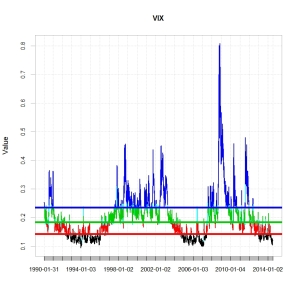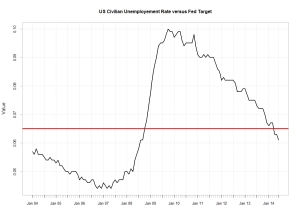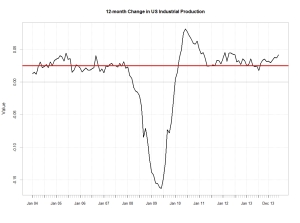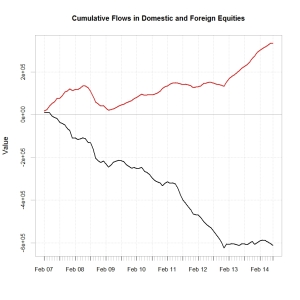Ok we have had our fair share of event risk so far this year. Ukraine, Israel, Portugal to name but a few….and we now have Yellen telling us that the Fed may hike the rates earlier than forecast. And guess what ? The Vix is still trading in the low bottom quartile.
Though my shock Index (ratio of VIX volga and Vix over 21 days) did venture above its long term median value on the back of the Portugal news, all of my risk indicators remain well entrenched in risk seeking territory….
My 2-state Markov model continue to sell volatility…I am not sure I would but I can t fault the outcome of the model so far.
Bearing in mind the above I am still a bit quizzical as of why risk is trading so low. We are getting indeed very little reaction from events that once would have sent the VIX flying into the 20 to 25% range . The only rationale I have is that Investors are now accepting that growth is significantly taking hold and therefore investment flows are logically channelling into risky assets and carry trades. Also there is now a strong understanding that central banks are determined in doing whatever is necessary to support growth and rid of systemic risk. This clearly has a strong dampening effect on any risk spikes, but lets not get too complacent about it…














